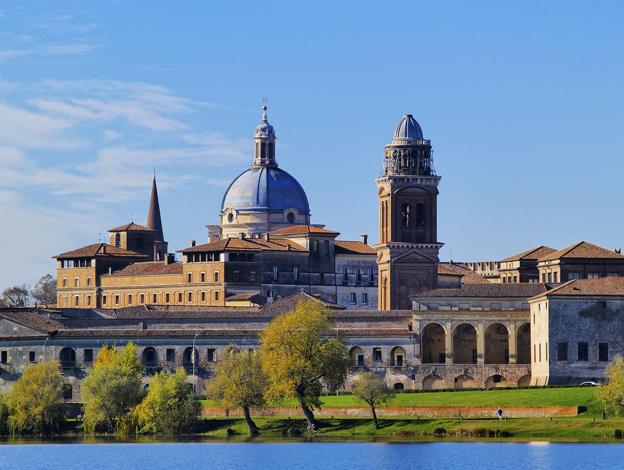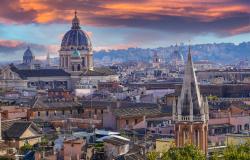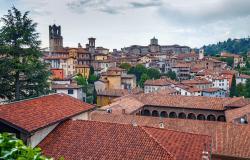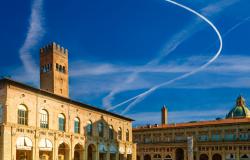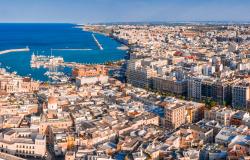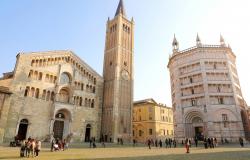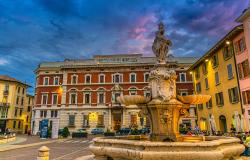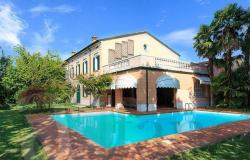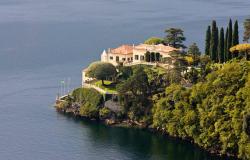In late October, the northern Italian city of Mantova was picked as the 2016 Italian Capital of Culture. If you are not familiar with this elegant city located in the wealthy Lombardy region, it is time to plan a trip.
Mantova was inscribed by UNESCO into its World Heritage List in 2008 because of the extraordinary architectural and artistic heritage left by the Gonzaga dynasty, the rulers of Mantova for four centuries.
The historic center is quite compact and can easily be explored on foot. Here are ten things you should not miss when you visit Mantova (and don’t forget to splurge on tortelli di zucca – pumpkin tortelli – and the classic sbrisolona cake).
1. The view from San Giorgio Bridge
There is no better way to get acquainted with Mantova than by admiring the city’s profile reflecting into the lakes that surround it. Consider booking a boat trip on the lakes, where cormorants, herons and lotus flowers are common sights.
2. Palazzo Ducale - Ducal Palace
The royal residence of the powerful Gonzaga family is one of Europe’s largest monumental buildings, measuring about 34,000 square meters, with some 500 rooms. Its construction began in the 13th century by the Captain of the People Guido Buonacolsi, whose family ruled the city before the Gonzaga. Additional buildings, connected by corridors and galleries and enriched by inner courts and gardens, were added through the centuries, resulting in a mix of architectural styles.

The Gonzaga lived here from 1328 to 1707. While the interiors are mostly bare (after decades of battles and excesses, the Gonzaga were forced to sell their magnificent art and jewelry collections for which they were famous all over Europe), they preserve their grandeur and many of the beautiful frescoes. Which brings us to:
3. La Camera degli Sposi - Bridal Chamber
The masterpiece by painter Andrea Mantegna (1431-1506) is located inside one of the fortified towers of the San Giorgio Castle, attached to the palace. La Camera degli Sposi is a room frescoed with paintings depicting the family and court of Ludovico Gonzaga, who commissioned the work and was the ruler of Mantua from 1444 to 1478, while other frescoes are said to refer to the election of Ludovico's son Francesco Gonzaga as Cardinal. They are all meant to celebrate the Gonzaga dynasty. The room is especially famous for the use of trompe l'oeil details and its di sotto in sù ceiling, evident in the “oculus”, a fake opening toward the sky showing cherubs (“putti”) peering down into the room. The Bridal Chamber was closed for almost three years following the earthquake that hit the neighboring region of Emilia-Romagna in 2012, and was reopened in April (advanced reservations recommended).
4. The "piazze" of the historic center
Mantua boasts many beautiful squares: Piazza Sordello, Piazza Broletto, Piazza Erbe, Piazza Mantegna. Stroll slowly through them and admire the splendid palaces that surround them, such as the medieval Podestà Palace, or the Palazzo della Ragione, with its 1473 astronomical clock by Bartolomeo Manfredi.
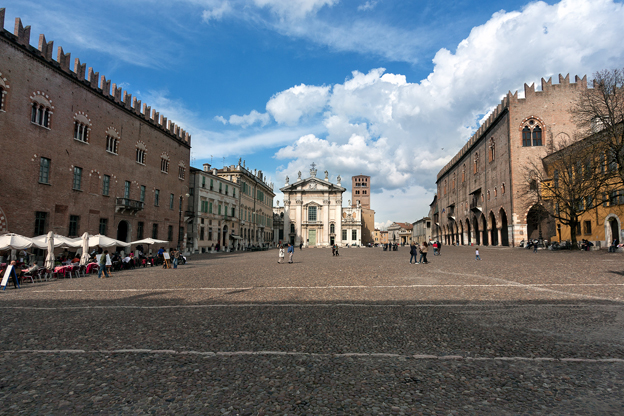
5. Teatro Scientifico del Bibiena
A few hundred meters from Piazza Sordello is the Teatro Bibiena, decorated with a facade by Giuseppe Piermarini, the same architect who designed Milan’s La Scala. The theater was designed and built by the Parma-born architect Antonio Galli Bibiena in just two years. A month after its inauguration, on January 16, 1770, it hosted the exhibition of enfant prodige Wolfgang Amadeus Mozart, who, at the age of fourteen, performed in a memorable concert with his father Leopold. The theater is considered a masterpiece of Baroque architecture and is worth a visit by itself, not just to see a show. In fact, it is part of Mantova’s network of museums.
6. Basilica of Sant'Andrea
On Piazza Mantegna, the Basilica of Sant’Andrea is important from a religious standpoint because it houses the relic called Preziosissimo Sangue di Cristo ("Most Precious Blood of Christ"), preserved in the Sacred Vessels. According to tradition, it was brought to Mantua by the Roman centurion Longinus, who collected it from the ribs of the crucified Christ. The Sacred Vessels are displayed during a solemn ceremony and procession on Good Friday. The basilica’s façade is a masterpiece by Leon Battista Alberti (1404-1472). Inside is the tomb of Andrea Mantegna.
7. Lungo Rio: Le Pescherie
For the romantically inclined, this little-known corner of the city should not be missed. The center of Mantua is cut by a canal connecting the Superior and Inferior lakes. Most of the canal has been covered, but the uncovered part is particularly evocative, especially by Via Pescherie. A farmers’ market is held in this area every Saturday morning, a perfect chance to try Mantova’s culinary delights.

8. Lovers of Valdaro
Sometimes called “Lovers of Mantua”, the Valdaro Lovers are a pair of human skeletons dating back 6,000 years discovered by archaeologists at a Neolithic tomb in S.Giorgio near Mantova in 2007 (a few days before February 14), during excavations of a Roman villa. Found in a fetal position, the two skeletons appear to have died or were interred facing each other, with arms around each other, thus reminiscent of a lovers' embrace (a thousand-year old embrace at that). They have been nicknamed the Romeo and Juliet of the Stone Age. They are on permanent display behind a crystal case at the National Archeological Museum of Mantova, which also houses a vast collection of Neolithic, Etruscan, Celtic, Roman, Langobardic, Goth, Medieval, and Renaissance finds.
9. Palazzo Te
About a kilometer away from the historic center is Palazzo Te, a fine example of mannerist architecture, the work of architect Giulio Romano (1499-1546), a pupil of Raphael. The frescoes here are unmissable. The subjects range from Olympian banquets in the Sala di Psiche and stylised horses in the Sala dei Cavalli to the most unusual of all, giants and grotesques wreaking havoc, fury and ruin around the walls of the Sala dei Giganti, where the painted columns seem to be crumbling down over you.

10. Festivaletteratura
To really get into the spirit of “an Italian capital of culture”, head to Mantua during the "Festivaletteratura" event, held every year in September (from the first Wednesday to the Sunday) since 1997. It is Italy’s most important literary festival and attracts writers, including Nobel prize winners and up-and-coming ones, and literature aficionados, from around the world.
For more about the history of Mantova, click here.
